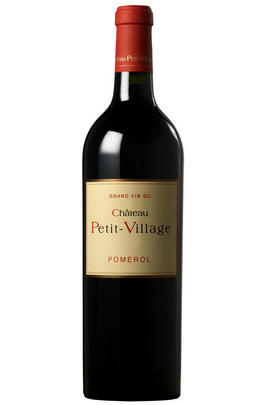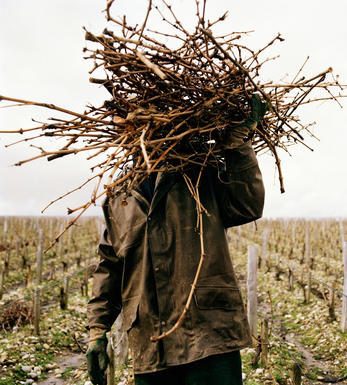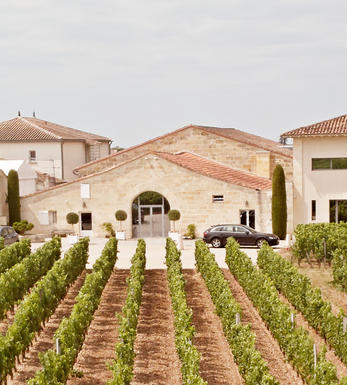
2008 Château Petit- Village, Pomerol, Bordeaux

Critics reviews
Robert M. Parker, Jr. - 02/05/2011
(Jancis Robinson MW - jancisrobinson.com - Apr 09)
While this estate’s wines never seem to be as good as one hopes (I have still have memories of the 1982 dancing across my palate), the 2008 has turned out reasonably well. It possesses sweet herb and coffee-infused black cherry, caramel, and cola-like fruit, medium body, a supple texture, and a very good finish. Enjoy this consumer-friendly Pomerol over the next 10-12 years.
(Robert Parker- Wine Advocate- April 2009)
About this WINE

Chateau Petit-Village
Château Petit-Village produces classic lush Pomerol wines that sell for a fraction of the prices that are commanded by some of its more fashionable neighbours. Since 1989 it has been owned by AXA and is run by Jean-Michel Cazes and oenologist Daniel Llose. AXA also owns Château Pichon-Longueville Baron, Château Cantenac Brown and Château Suduiraut.
Petit-Village's 11-hectare vineyard is located on soils rich in gravel with a limestone and clay subsoil. It is bordered by Vieux Château Certan to the north and La Conseillante to the east. The vineyard was effectively destroyed by the 1956 frosts and had to be totally replanted.
Petit-Village's wine is a blend of 80% Merlot, 10% Cabernet Sauvignon, and 10% Cabernet Franc. The grapes are fermented in temperature-controlled concrete vats and the wine is matured for 14-18 months in 100% new oak casks.

Pomerol
Pomerol is the smallest of Bordeaux's major appellations, with about 150 producers and approximately 740 hectares of vineyards. It is home to many bijou domaines, many of which produce little more than 1,000 cases per annum.
Both the topography and architecture of the region is unremarkable, but the style of the wines is most individual. The finest vineyards are planted on a seam of rich clay which extends across the gently-elevated plateau of Pomerol, which runs from the north-eastern boundary of St Emilion. On the sides of the plateau, the soil becomes sandier and the wines lighter.
There is one satellite region to the immediate north, Lalande-de-Pomerol whose wines are stylistically very similar, if sometimes lacking the finesse of its neighbour. There has never been a classification of Pomerol wines.
Recommended Châteaux : Ch. Pétrus, Vieux Ch. Certan, Le Pin, Ch. L’Eglise-Clinet, Ch. La Conseillante, Ch. L’Evangile, Ch. Lafleur, Trotanoy, Ch. Nenin, Ch. Beauregard, Ch. Feytit-Clinet, Le Gay.

Cabernet Sauvignon Blend
Cabernet Sauvignon lends itself particularly well in blends with Merlot. This is actually the archetypal Bordeaux blend, though in different proportions in the sub-regions and sometimes topped up with Cabernet Franc, Malbec, and Petit Verdot.
In the Médoc and Graves the percentage of Cabernet Sauvignon in the blend can range from 95% (Mouton-Rothschild) to as low as 40%. It is particularly suited to the dry, warm, free- draining, gravel-rich soils and is responsible for the redolent cassis characteristics as well as the depth of colour, tannic structure and pronounced acidity of Médoc wines. However 100% Cabernet Sauvignon wines can be slightly hollow-tasting in the middle palate and Merlot with its generous, fleshy fruit flavours acts as a perfect foil by filling in this cavity.
In St-Emilion and Pomerol, the blends are Merlot dominated as Cabernet Sauvignon can struggle to ripen there - when it is included, it adds structure and body to the wine. Sassicaia is the most famous Bordeaux blend in Italy and has spawned many imitations, whereby the blend is now firmly established in the New World and particularly in California and Australia.


Buying options
Add to wishlist
Description
An attractive, supple, dark plum/garnet/purple-tinged Pomerol, the 2008 exhibits notes of licorice, olives, mocha and jammy black and red fruits. It is an elegant, medium-bodied, silky red to consume over the next 6-8 years.
Robert M. Parker, Jr. - 02/05/2011
wine at a glance
Delivery and quality guarantee